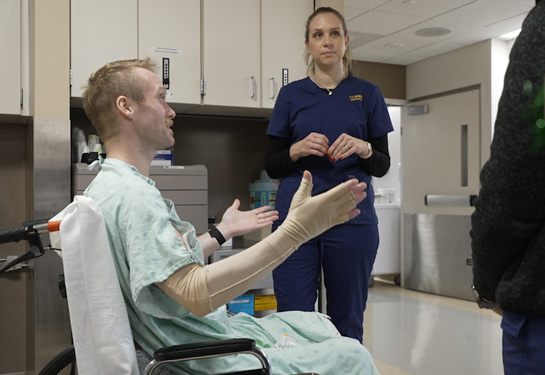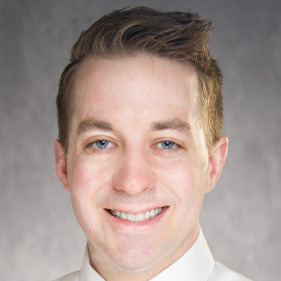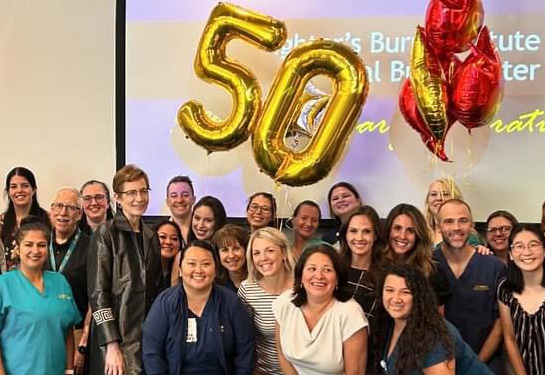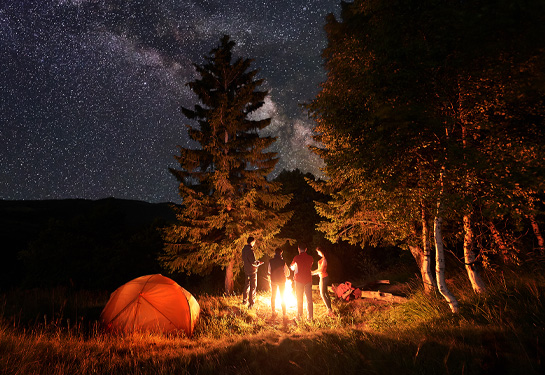50 years of life-saving burn care
UC Davis Health marks half-century of its Firefighters Burn Institute Regional Burn Center
Fifty years ago this month, UC Davis Health began to transform the way it cares for burn patients by providing expert treatment that has become a model for hospitals across the country.
The establishment of the Firefighters Burn Institute Regional Burn Center at UC Davis in January 1973 is credited with saving the lives of hundreds of people who would have succumbed to some of the most painful, life-altering and hard-to-treat injuries. The center was the first in Northern California to bring together expert surgeons, nurses and professionals from diverse disciplines into a dedicated unit.
But had it not been for a devastating plane crash that shocked the community, the center may not have started when it did.
The impetus to its founding was the Sept. 24, 1972, plane crash into Farrell’s Ice Cream Parlour in Sacramento, which killed 22 people, 12 of them children. The 25 survivors of the Farrell’s crash were rushed to area hospitals, but none offered the specialized care the patients so greatly needed.
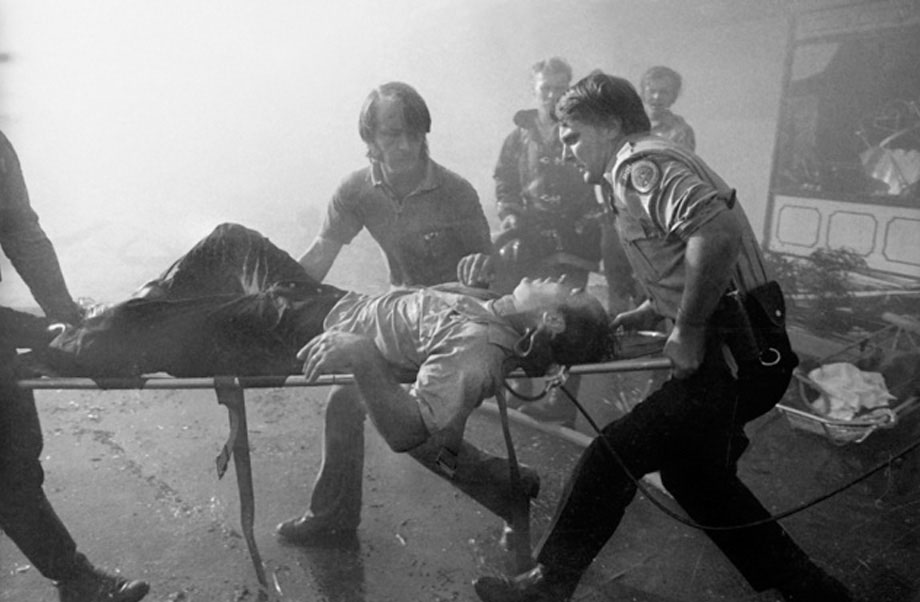
“The firefighters didn’t have any place to bring the patients. They got together and said, ‘this is not acceptable,’ and worked with the University of California, Davis to build the center,” said Tina Palmieri, chief burn surgeon at UC Davis Health since 2001.
Today, the Firefighters Burn Institute Regional Burn Center at UC Davis is one of the nation’s top programs for burn care, research and training. The team oversees a 12-bed intensive care unit and anywhere from 30 to 40 patients throughout the hospital on any given day.
“Our job is to take care of anyone who sustains a burn injury in our region,” Palmieri explained. “And our region is not just Sacramento, Davis and Tahoe. It goes as far north to the Oregon border, out to the coast and into the Reno, Nevada, area and down to just about Yosemite National Park.”
The burn center’s service area, mission and reputation have greatly expanded over the past five decades:
- In 2010, the center tripled in size by moving into its current location on the second floor of the hospital thanks to a million-dollar gift from the Firefighters Burn Institute.
- In 2020, the American Nurses Association recognized burn nursing as a specialty.
- In 2021, the team received re-verification as an Adult Burn Center from the American Burn Association for meeting the highest standards of care for burn-injured patients.
Those accolades and more underscore the excellence in patient care. But the stories from survivors show the real impact over five decades.
“I knew nothing about burns before this happened”
Working for a seafood distributor in the Bay Area, 30-year-old Jacob Vance ended up at the burn center at UC Davis after wrecking his motorcycle on the Carquinez Bridge south of Vallejo, California. He had never heard of the center, but his knowledge — and his life — changed in an instant.
“I cannot remember the accident. I learned that I was on fire, and they didn’t want my helmet to melt to my face,” Vance recalled. “I got airlifted to UC Davis, where I spent nearly four months in the hospital. I knew nothing about burns before this happened.”
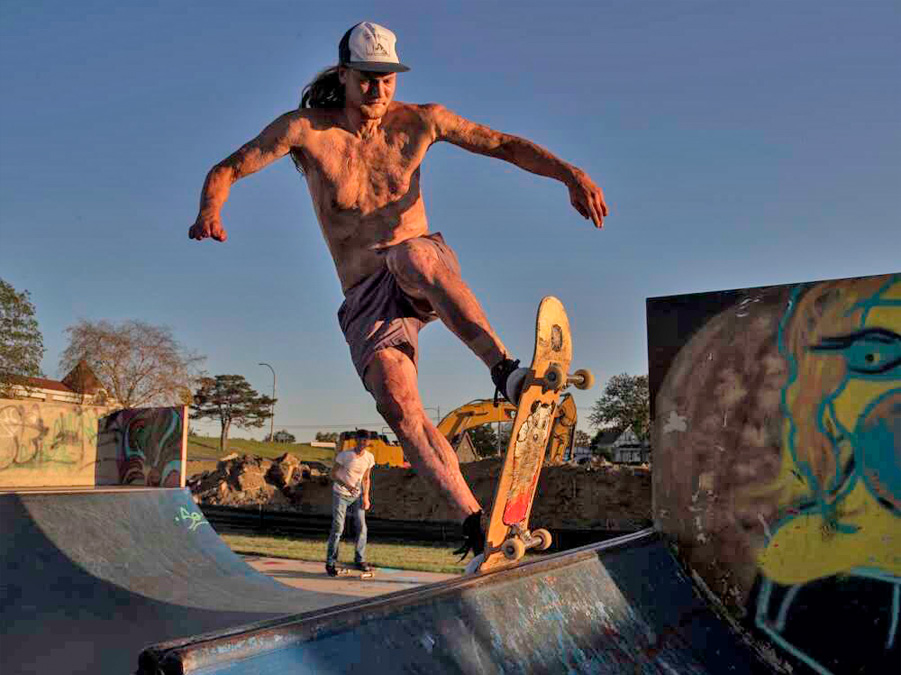
Vance says he is grateful that he landed at UC Davis. With third-degree burns across 50% of his body, he underwent seven major surgeries, lost all his fingers on his right hand and learned valuable life lessons about a hopeful future.
“I understood how lucky I was to be alive and how much I wanted to be alive,” Vance said. “I learned how important and grateful I was for my friends and family. I saw how strong I was as long as you stick to the goal.”
He credits his resilience to his humor, even in the darkest of times, and the support from the doctors and registered nurses in the burn center.
“It’s not exaggerating to say looking back and during, I couldn’t believe the level of care that the burn ICU nurses are able to give. They didn’t overpromise or delay hope. They make a huge difference in people’s lives,” Vance said.
Physicians and nurses provide unique level of care
“Caring for burn patients is really a unique specialty. Our patients are often with us for very long periods of time, and as nurses, we have to be able to adapt to help care for them on every step of their journey,” explained Kiera Earney, a registered burn nurse who has cared for people at UC Davis Medical Center for 13 years. “We try to get to know our patients. We try to find out what's important to them, what their goals are and who they really are as an individual so that we can help them.”
One surgeon on the team understands the needs of his patients in a very personal way. Jason Heard, an associate professor in the Division of Burn Surgery and Reconstruction, was burned over 40% of his body at the age of 12, when playing with fire that exploded in front of him. While most of his scarring is hidden by his scrubs and white coat, he inherently knows the struggles of survivors.
I try not to emphasize my previous injury when taking care of patients, but when I share what happened for me, it projects for them what their life may be like. I’m living proof it gets better.—Jason Heard, Burn survivor and UC Davis Health burn surgeon
“I try not to emphasize my previous injury when taking care of patients, but when I share what happened for me, it projects for them what their life may be like,” Heard said. “I’m living proof it gets better.”
Heard is also living a professional life he says would not have happened without the childhood accident in the only place he hoped to complete a residency and then practice.
Learn about the partnership between UC Davis Health and Shriners Children’s Northern California
“I knew UC Davis was one of the best burn units in the country, and I knew I wanted to train here,” Heard explained. “What sets UC Davis apart is the volume of burns we take care of and the severity of those burns. We truly have every expert in all the needed disciplines and truly function as a team.”
In addition to the surgeons and nurses, UC Davis’ burn center includes a multidisciplinary team of wound care technicians, dietitians, physical and occupational therapists, respiratory therapists, pharmacists, social workers, discharge planners and outreach coordinators.
In addition, the Firefighters Burn Institute is a valuable partner that raises money for the center, which provides resources and support to family members, so they don’t feel alone during the long journey of a loved one’s recovery. One of the ways they raise money is the Fill the Boot for Burns boot drive, where firefighters collect money in fire boots at area intersections in early February.
Support brings a metamorphosis for a patient aided by support group
UC Davis burn patients learn about peer support groups early in their recovery.
“Recovery is not just physical, but there are emotional and social challenges as well. So, we have support groups every week. These are for our burn survivors, their families and caregivers. We hope that the groups help answer a lot of their questions and help ease some of their anxiety,” said Lauren Spink, burn outreach coordinator. “Survivors can build a network and a friendship with other burn survivors, which is very powerful.”
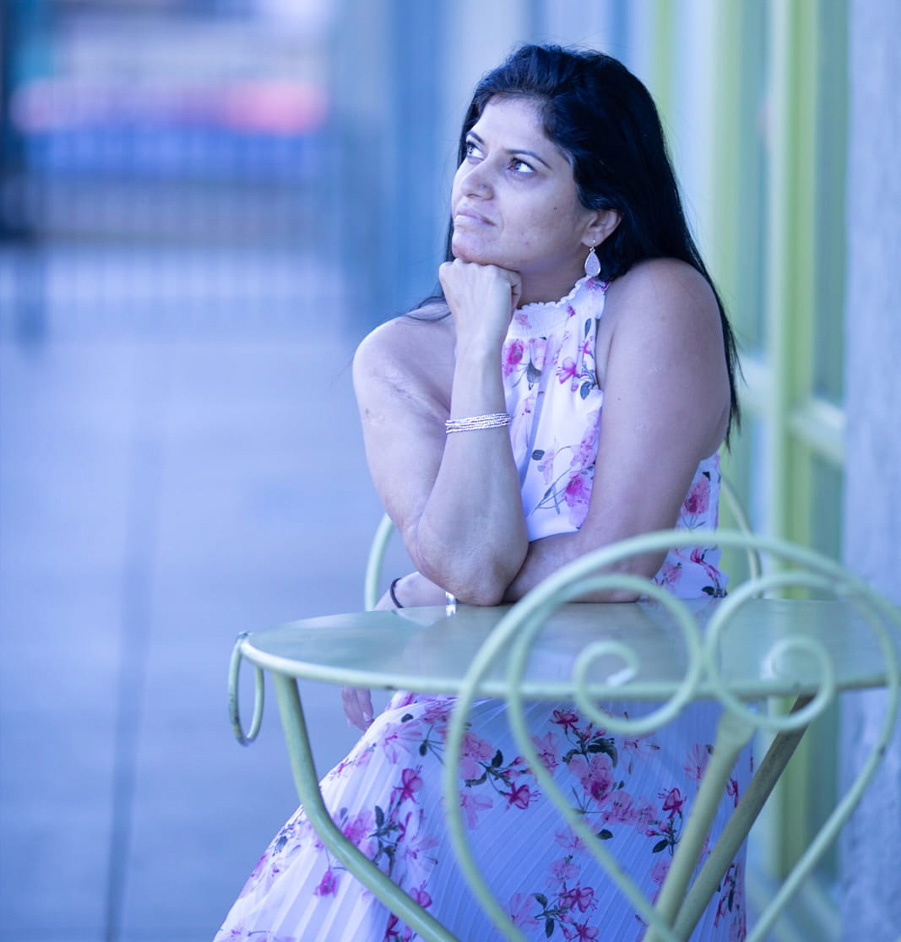
For 43-year-old Guleena Bakshi, that support has been life-changing.
Burned by a firecracker at the age of 5, she spent three months in a medically induced coma followed by a 38-year period in which she described herself as overworked and introverted. That changed in 2016 when she moved to California discovered the burn center.
“I was task-oriented and the support group made me relationship-oriented,” Bakshi said. “I feel like I was a caterpillar who came out of my cocoon as a butterfly all because of UC Davis. The metamorphosis wouldn’t have happened. I’d have been in my self-imposed prison in the four walls that I created for myself.”
50 years and counting
Leaders at the Burn Center celebrate their accomplishments over the past five decades. But they are not resting on their laurels. They set their sights toward the future and contemplate how they can better care for their patients.
History shows that 50 to 60 years ago, up to half of people with burns over 30% of their body died from their injuries. Not so today.
“The big switch is now we’re not talking about keeping people alive. We’re talking about restoring their quality of life,” Palmieri said. “Our goals are higher. We want to make people the best that they can be after they have been injured.”
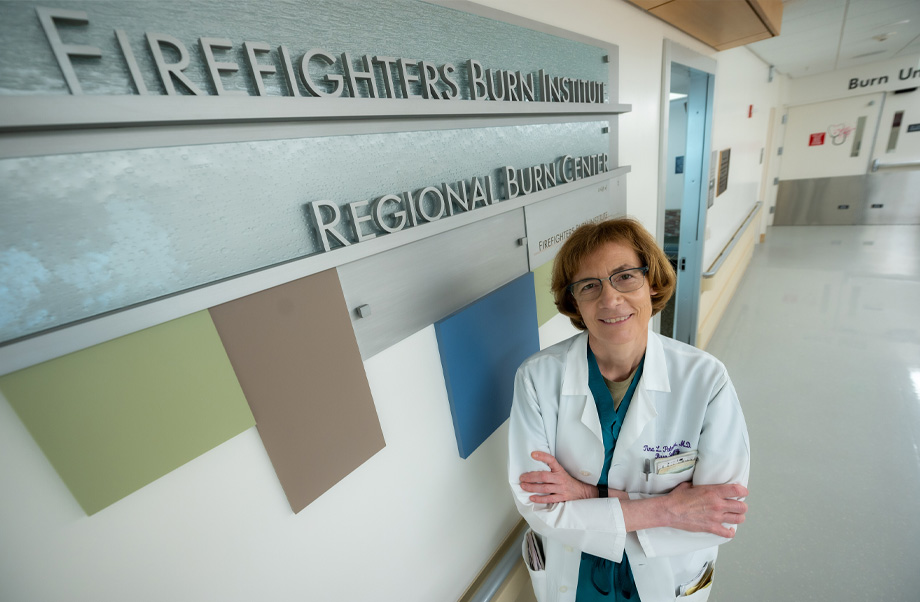
In addition to adding the latest technology tools and implementing cutting-edge research on wound care, Palmieri and her team eagerly await the completion of UC Davis Medical Center’s California Tower. The project, which adds approximately one million square feet of additional space and is expected to be completed in 2030, also includes 20 additional beds for burn care.
“The new expansion allows us to be the people who define what excellence and burn care are,” Palmieri said.
“I want us to be the number-one referral burn center in the country for massive and really severe burns,” added Heard, the burn-injury-patient-turned-surgeon. “I want us to be known as the best and to expand our catchment area.”
Something better to create change
Burn Center leaders are not the only ones looking forward to expanding their hospital unit and treatment techniques. So are the many survivors who got a second chance at life. From the skilled surgeons and nurturing nurses to new technologies and meaningful investment, the UC Davis Burn Unit is the positive outcome from that tragic day, 52 years ago.
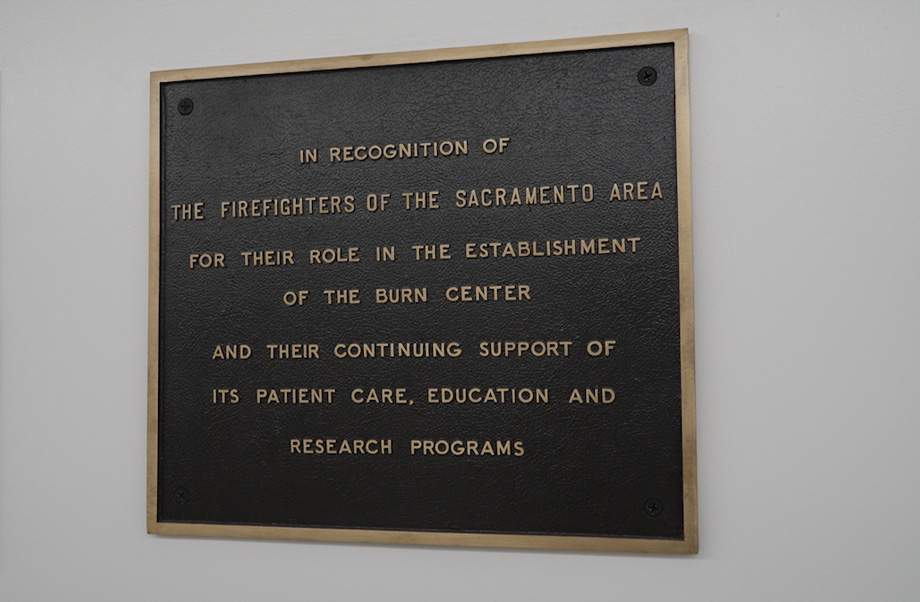
Jacob Vance embraces the parallels of what happened at that ice cream parlor in 1972 and on his motorcycle crossing that bridge in 2020.
“You learn to see silver linings, to be able to take something tragic or painful or hurtful and turn it into something good or better to create change or comfort for someone else,” he explained. “That really is a big lesson: you can always start again. Depending on your attitude and what you do it, it can turn into something beautiful.”
Related stories:
Support and resources for burn survivors result of tragic plane crash 50 years ago
‘I remember turning and falling’: Burn survivor shares warning about campfires
“I literally survived a fire.” Burn survivor finds strength in helping peers
Touchdown: Burn survivor gets support during toughest challenge of his life
Burn team cares for soon-to-be father just in time for his son’s arrival

